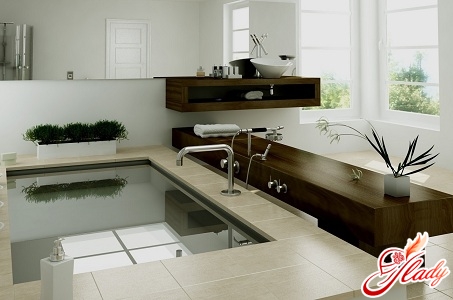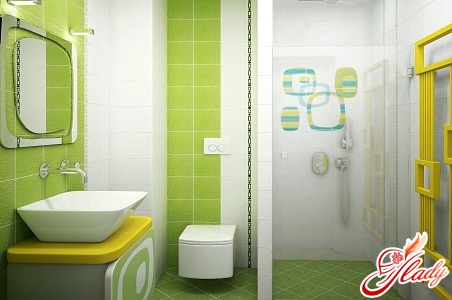 Most of our compatriots andcompatriots live in apartments and houses built during the Soviet era or in new buildings constructed using low-cost projects. So, in most such dwellings, the bathroom with toilet or combined bathroom is the smallest room in the house. And since the room is small, then renovating it is a piece of cake. However, despite its modest size, the bathroom is fraught with many surprises, ranging from disproportionate repair costs to its unpredictable consequences. We will talk about where to start renovating a bathroom and in what sequence to do it in order to save money and not lose quality.
Most of our compatriots andcompatriots live in apartments and houses built during the Soviet era or in new buildings constructed using low-cost projects. So, in most such dwellings, the bathroom with toilet or combined bathroom is the smallest room in the house. And since the room is small, then renovating it is a piece of cake. However, despite its modest size, the bathroom is fraught with many surprises, ranging from disproportionate repair costs to its unpredictable consequences. We will talk about where to start renovating a bathroom and in what sequence to do it in order to save money and not lose quality.
Types of repair in the bathroom
By degree of expectation, bathroom renovationcan be planned and spontaneous. The need for unplanned repairs may arise, for example, after a flood caused by neighbors or a burst pipe (God forbid!) in your house. Unexpected repairs can also be caused by your desire or need to replace the bathtub, which entails changing other plumbing, sewer pipes and, as a result, updating the tiles, etc. Planned repairs are a process, although troublesome, but pleasant. In any case, it is this kind of repair that gives the expected result and brings a feeling, if not pleasure, then satisfaction. According to the degree of complexity and material costs, bathroom repairs can be designated as major and cosmetic. Cosmetic repairs are, of course, cheaper, but they are only possible in the case of good plumbing and water supply and the absence of mold (this misfortune also happens!). During cosmetic repairs, wall and ceiling coverings are changed, the floor and faucets are updated. But more serious (even non-major) repairs require a serious approach, as well as thorough preparation.
Preparation for repair
If you are planning your renovation in advance, start withvisualization or even a sketch. Imagine what exactly you want your bathroom to look like. First of all, decide on the color. Traditionally, pastel colors or a combination of two tones of the same color are chosen for the bathroom: blue and light blue, light green and green, beige and peach. However, recently it has become fashionable to use bright colors and contrasting colors. Then you need to decide what materials you want to use for finishing: ceramic tiles or porcelain tiles, mosaics or plastic panels. Conduct a thorough inspection of the plumbing for faults, and in the case of clearly outdated plumbing, decide on options for replacing it. Measure the height, width and length of the bathroom, calculate its area and take a tour of construction stores and markets. Having examined the assortment and estimated the prices, make an estimate of the costs of the repair. And only after that you can purchase finishing materials, plumbing and accessories and make a work plan.
Work plan
Bathroom renovation should be done in stages:

Repair errors
Successful repairs are only possible with a step-by-step approachworks. A common mistake that many make is installing plumbing first. For a quality repair, you will have to give up using the bathroom for its intended purpose for a while and install plumbing only at the appropriate stage of the work. Another, no less common, mistake is overestimating your own capabilities. Many believe that they can handle the repair themselves. But believe me, it is better to entrust such work as replacing pipes and electrical wiring to specialists. And not everyone can handle tiling a bathroom. And working with porcelain stoneware requires not only skill, but also special tools. A plasterboard ceiling is another common mistake. Following fashionable trends, apartment and house owners often install such ceilings even in the bathroom. However, a bathroom is a special room, and plasterboard is a hygroscopic material, so such a ceiling will not last long and sooner or later will begin to deform. The best option for a bathroom is a stretch or suspended ceiling. The cheapest (and quite reliable) is painting the ceiling with water-based or facade paint. And the most difficult consequences for your bathroom and your wallet will be the savings on replacing pipes. However, this is only relevant for old houses. If you are renovating a new house or updating a bathroom after a recent major renovation, then you just need to make sure that the water supply and sewerage are in good working order. Renovating even such a small room is not a cheap pleasure. And therefore, when planning a bathroom renovation, save up some money. Apparently, this is where you need to start renovating your bathroom. What did you think? Beauty requires sacrifice, and the beauty of your home will certainly require sacrifices from your wallet. We recommend reading:









